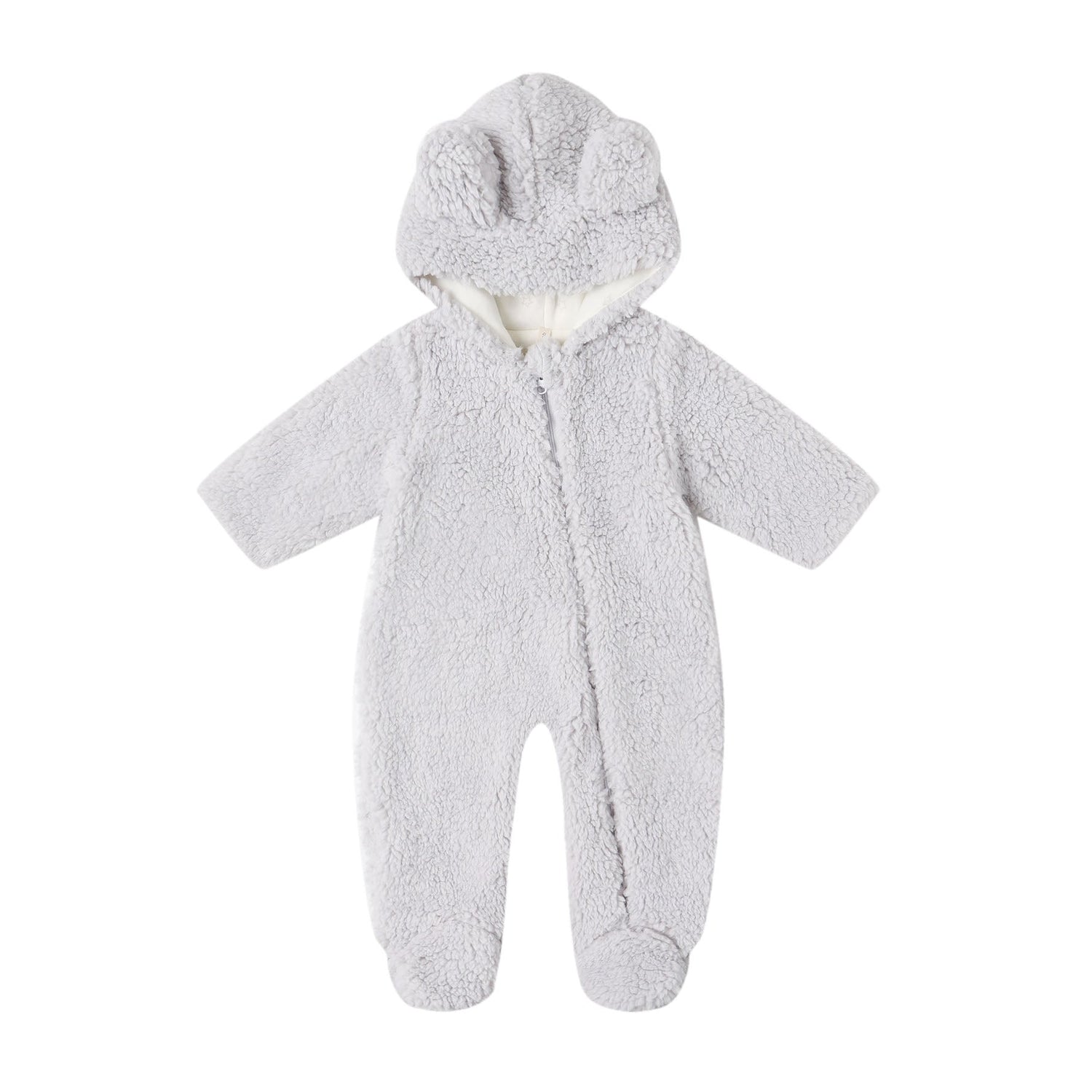Before giving birth, I had this preconceived notion that labor and delivery would be the most challenging part of having a baby. After my delivery with my daughter, I quickly learned that the postpartum healing can be one of the most difficult phases as you transition into your role as a new parent. Regardless of how your delivery went, childbirth puts a lot of strain on your body. That’s why preparing for recovery and allowing yourself time to heal from your vaginal delivery is so essential.
Every pregnancy, delivery, and recovery is different. If you give birth vaginally, you may experience tearing or an episiotomy that can make healing more difficult. Tears can range in severity from 1st degree (less severe) to 4th degree (greatest severity). Most tears will require stitches to help you heal quicker and properly. Although you don’t normally feel the stitches over the first few days, they can become itchy and uncomfortable as they start to dissolve. This normally occurs between 1 and 2 weeks. Even if you don’t tear, you will still experience some soreness and pain in your perineum.
One of the best ways to help aid in healing is to prep care items to have ready to go at home before you even leave for the hospital. I found that being prepared with all the essentials made the healing process go a lot smoother, and I was able to combat pain and discomfort before it occurred.
Although your hospital will most likely provide you with plenty of products to ease discomfort while you’re staying at the hospital, you don’t want to run out of something you need once you’re back in the comfort of your own home. Here are some of my favorite supplies that I like to keep on hand, as well as some other ways to prep before your baby arrives!
Pre-Birth Prep
Items to have on hand:
- Ice pack: It may sound weird, but placing a cold ice pack over your perineum can provide a lot of relief. I found a long skinny ice pack that came in a removable cover. This was convenient because I could easily wash the cover. Never place an ice pack directly on your skin. Even in the cover, it can be too cold. If ice packs aren’t your thing, some people swear by padsicles. Padsicles are a quick and direct way to provide comfort and cooling to your injuries. Here is a great tutorial on how to make them at home.
- Tucks pads: Tucks are one of my favorite items to have after delivery. I place them directly over a clean pad during the first few days after birth. Tucks contain witch hazel that provides coolness and relief from itchiness and soreness. This is great especially as stitches start to dissolve.
- Peri bottle: Another one of my personal favorite items is a peri bottle. After delivery, you will want to avoid wiping. The hospital provides bottles, but they can be a bit challenging to use. I recommend getting an upside down peri bottle to make life a bit easier.
- Medications: Your doctor will most likely prescribe pain killers and stool softener after delivery. Just in case, I recommend having some on hand. Just make sure you get items that are safe with breastfeeding if that’s the route you are taking for feeding.
- Dermoplast spray: I always liked to have dermoplast spray on hand. I always felt like it provided some level of temporary relief from pain and itchiness.
- Comfortable underwear: The last thing you’re going to want to do is try to fit into the underwear you wore pre-baby, especially if you’re bleeding a lot. I find that having comfortable, breathable underwear made a huge difference. Try to avoid anything with a tight waistband. I always go up in size as well.
- Loose, soft pants: Along with underwear, find pants that will be comfortable to wear. Again, I try to get pants that will not have a tight waistband and that are easy to get on and off. (These were my absolute favorite pants for both pregnancy and postpartum recovery.)
- Pads: Of course with delivery comes excessive bleeding. The amount of time you bleed will vary. However, for many women, bleeding tends to slow down and speed up, and even stop and return at times. I like to keep varying sizes of pads so that I’m prepared for heavy or lighter flow.
- Your favorite treats: And of course, make sure you have your favorite snacks and treats on hand. You will be hungry, and you won’t want to be making trips to the store in those first few days.
Tasks to complete before delivery:
- Clean your home: I found that giving my home a deep clean before I had my baby was super beneficial. I didn't have to worry about cleaning in the first few days with my newborns which allowed me to focus on healing.
- Freezer meals: One of the best things you can keep on hand is easy to prep meals. I found it difficult to even stand after delivery with my first baby, so having meals ready to go that didn’t require anything on my part were a lifesaver. Check out this incredible guide for prepping food for the postpartum period from Lexi at Lexi's Clean Kitchen!

Postpartum Tips
Healing can be hard, and it can take a long time. Some women feel good within the first few days. Most women feel mostly healed by their 6-week appointment. However, some don’t feel pain-free until months later. Regardless of how long it takes, here are some tips to help aid in your healing.
- Stay ahead of your pain: This may be controversial to some, but in those first few days, I found one of the best things I could do for myself was to try to stay ahead of the pain by taking my pain killers on a schedule. If I thought the pain was getting better and I skipped a pill, the intense pain would quickly return. I found that staying on top of it over the first few days really helped my sanity.
- Don’t over exert yourself: Trying to slow down and wait for your body to heal can be challenging. We have been pregnant for 9 months and we are ready to have our life and bodies back. However, rushing into things can make the healing take much longer. So slow down, enjoy the newborn phase, and let your body rest.
- Drink lots of water: Water is truly magical, and drinking plenty of water aids in your healing. So keep that jumbo water bottle filled with ice water and drink it religiously.
- Feed yourself: Adjusting to a newborn takes time. It’s easy to lose track of time and forget to eat. In order to properly heal, you need nutrients. So pull out those snacks and freezer meals and make sure to feed yourself. Set a timer if you need to.
- Sit on a pillow: I found that sitting on a pillow provided a lot of relief. With my first baby, I preferred a blow-up donut pillow. However, with my second baby, I found that using a nursing pillow was one of the best things to sit on. The opening in the middle allows you to sit comfortably without putting pressure on your perineum that would cause greater pain and discomfort.
- Avoid wiping and take stool softeners: Avoid wiping at all costs. Instead, use a peri bottle and pat yourself dry. This will help prevent infection as well as prevent pulling that may cause pain on your stitches and sore muscles. Going to the restroom after delivery can be terrifying. Taking stool softeners can make it a lot easier. If you feel the urge to go, get to the bathroom as quickly as you can. Try not to push too hard. You can read all about postpartum pooping here!
- Watch for signs of infection: With tearing and episiotomies, you have a greater risk of acquiring an infection. Vaginal discharge is common after birth. However, if it becomes foul smelling, or if you find you have an excessive amount of pain, you may have an infection. If this is the case, reach out to your doctor or midwife. It’s important to note that the colors of your bleeding will change. You may experience some yellowish looking blood near the end. When this happened to me, I became very alarmed and assumed I had an infection. To prevent excessive worrying, you can educate yourself on the norms of lochia (postpartum bleeding).
- Don’t skip that 6 week follow up: If you feel fine as you approach your 6-week postpartum checkup, you may be tempted to skip your appointment. It’s important to go even if you feel fine. The doctor will check to make sure there aren’t any major issues or concerns, and will check for infection. He will also check your uterus to make sure it has gone back to its normal size. If you’re still in pain, be sure to mention it. You may even find you need to make another appointment months later if the pain is still happening. There are plenty of things that can be done to help chronic pain, so don't feel like you have to live with it long-term. Sometimes, scar tissue builds up that can cause long-lasting pain. Doctors can help repair it, so reach out if you feel that would be beneficial. Some people also find that visiting a pelvic floor specialist is helpful.
- Ask for help: It’s important to ask for help in those first few days. Remember, you just did an AMAZING thing! So rest and let your husband or partner pamper you. If you are a single momma, don’t be afraid to reach out to friends and families for help. Try your best not to carry heavy things, avoid going up stairs too often, or exercising intensely. Remind yourself that your body needs time, and it’s ok to need help.
Every experience is different. Some tear or receive an episiotomy, some have difficulty healing, while some new mommas heal quickly. No matter what your experience looks like, make sure to give your body time and don’t rush. Enjoy your baby, and enjoy this new time. Try to find the positives in each day, and praise yourself for all your small wins, despite all the challenges that come with this new phase.
Do your best not to wish away those first few weeks so that you can just be healed already. When I found myself doing this, I realized that wishing for the future meant I’d be wishing away this precious time with my newborn as well. With time, things will get better. So enjoy all the beauty that is still present, and enjoy ALL the newborn snuggles!

For more tips, visit our blog at babycubby.com






